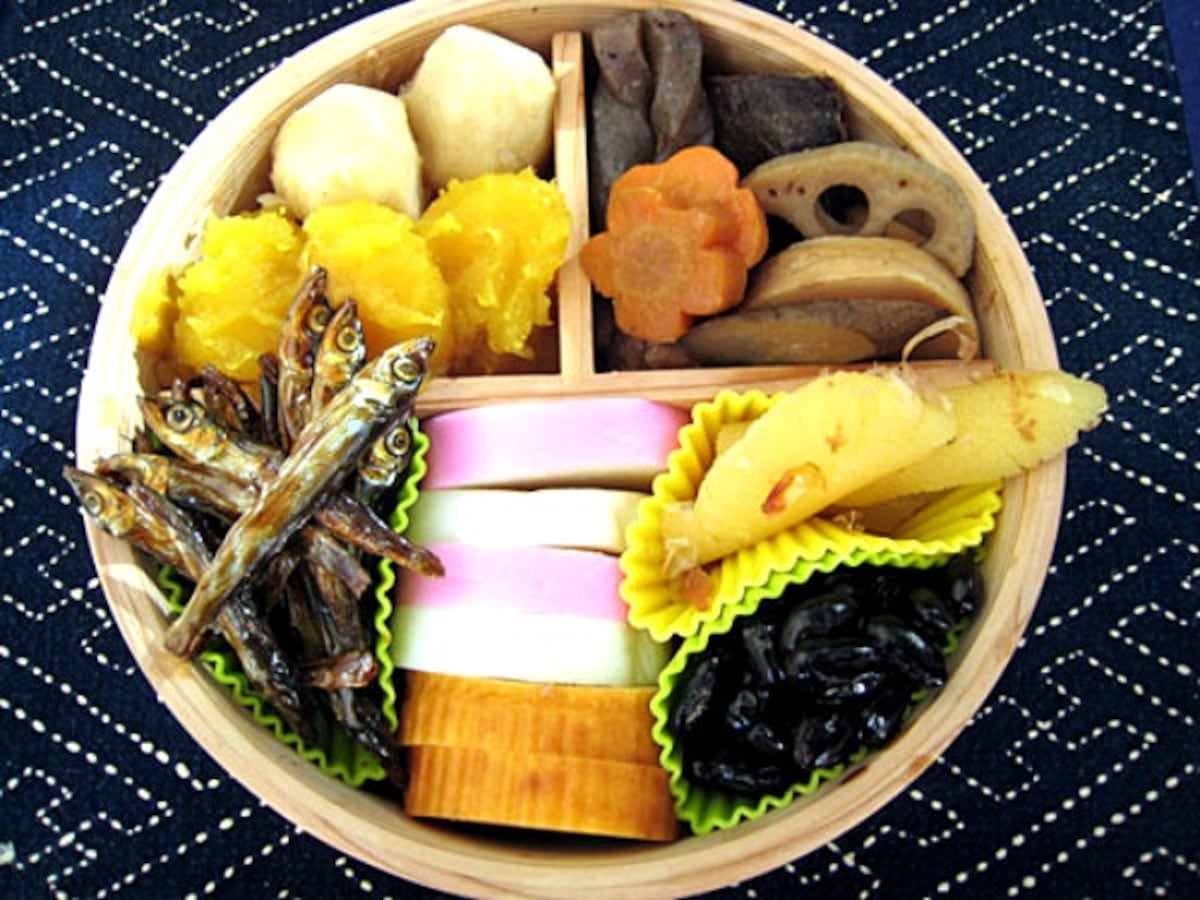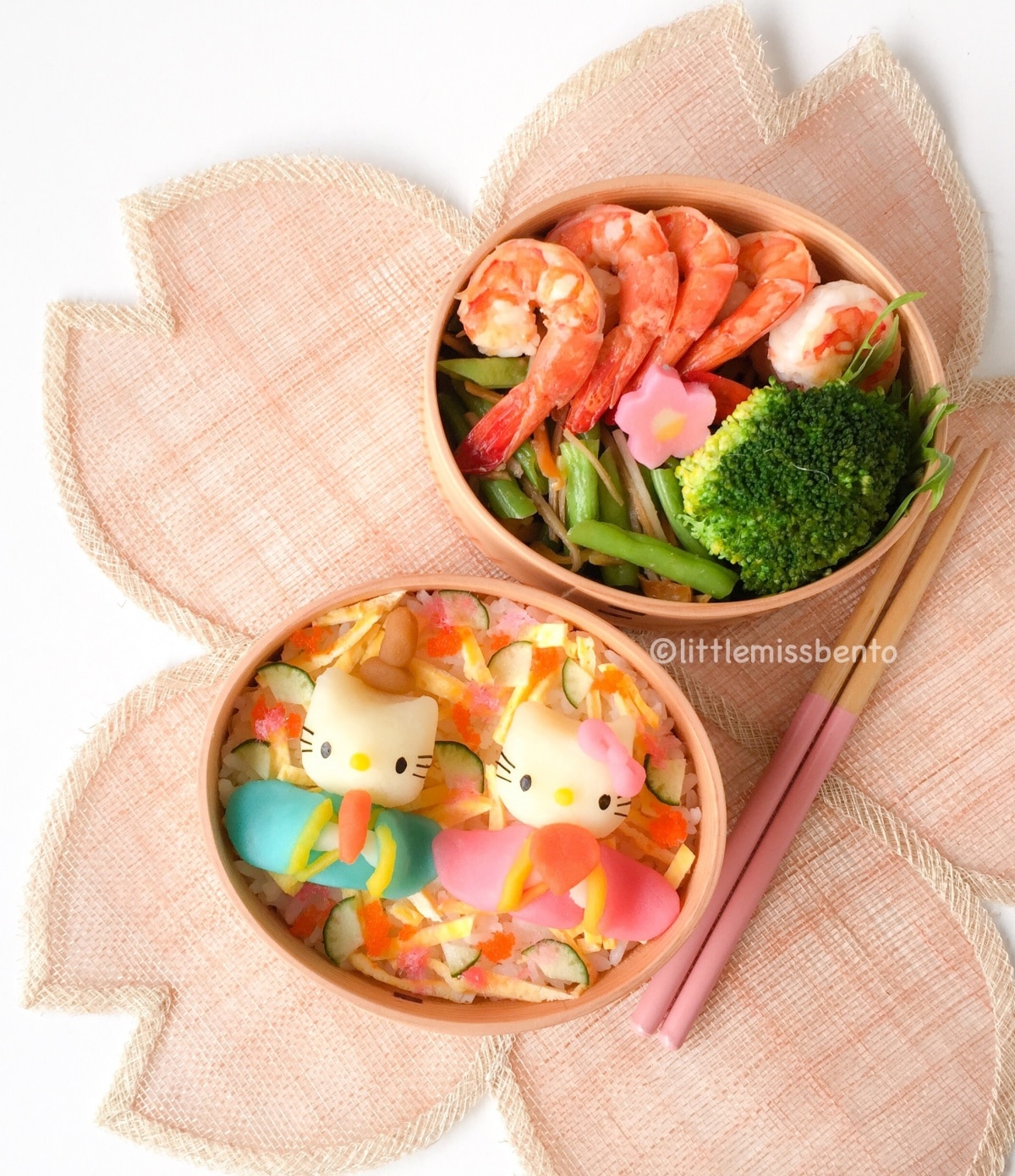12 Festive Bento for a Year of Holidays
Jazz up your humdrum lunchbox with some festive bento spread out through the year. We’ve compiled a list of 12 bento based on Japanese holidays and festivals, so be sure to mark the dates for these special lunches!
By Ellery Smith1. January—New Year’s Holiday

http://justhungry.com/everything-osechi-ryouri-japanese-new-years-feast-food-has-meaning-and-confession
Bring in the New Year with osechi, a traditional Japanese New Year’s dish comprised of bite-sized pieces of vegetables, fruits and seafood, each with its own significance. A common sampling is kuromame, a sweet, soft black bean that comes from the ancient word meaning strong and healthy: mame. Another auspicious sampling is kuriton, small nuggets of ground sweet potato and chestnut. Their golden color represents good fortune and prosperity. The colorful box above is from our friends at JustHungry.
2. February—Setsubun
Packed closely together in this bento box are Otafuku, the goddess of joy and good fortune, and a demon—perfect accents to any Setsubun bento, like this one from Little Miss Bento. Celebrated February 3 as the first day of spring in the old Japanese calendar, on Setsubun people throw roasted soybeans while chanting “Oni soto, fuku wa uchi!” (“Demons out, luck in!”).
And while the “sushirrito” (sushi burrito) may have just started to catch on in the U.S., the Japanese have long been eating something similar for good luck on Setsubun in the form of eho-maki. Originating from Osaka, these large, uncut sushi rolls contain seven ingredients (since seven is an auspicious number in Japan) and must be eaten in total silence while facing the lucky cardinal direction for that year.
3. March—Girls’ Day
March 3 is the Hina Matsuri (Dolls’ Festival or Girls’ Day), a day when families pray for the happiness, health and growth of young girls by displaying doll sets meant to ward off evil spirits. The most elaborate doll stands have seven platforms that include furniture and a palanquin, and all displays include an emperor and empress on the highest tier. Even if you don’t have a hinadan (doll platform), you can make your own emperor and empress atop the traditional Hina Matsuri food, chirashi sushi! In this case, Little Miss Bento has a pair of Hello Kitties in proper doll regalia just for the occasion.
4. April—Showa Day

Showa Day (April 29) commemorates the life of Emperor Hirohito, known posthumously as Showa, who reigned from 1926 to 1989. And what better way to celebrate than picking up a box of one of his favorite foods: unagi, or eel.
5. May—Children’s Day
Originally called Tango no Sekku., which celebrated boys’ happiness, Kodomo no Hi (Children’s Day) now celebrates both boys and girls. Households hoist up carp flags signifying the number of members of the family and fold paper helmets that represent the soldier Kintaro, who is said to have had tremendous strength when he was a child—just like the one in this bento from Little Miss Bento!
6. July—Tanabata
Celebrate the reunion of two star-crossed lovers: Orihime (Vega) and Hikoboshi (Altair), who were separated by the Milky Way, come together once a year on Tanabata, otherwise known as the Star Festival. On the seventh day of the seventh month, many Japanese people write their wishes on colored strips of paper and tie them to a bamboo branch, hoping their wish will come true. In this bento, ribbons of cucumber and clear shirataki noodles form the sky for our edible lovers.





